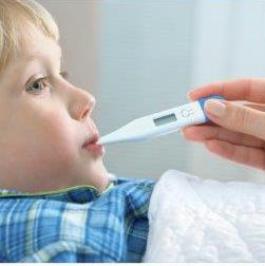Every fall/winter we go through the same dreaded respiratory virus season. What exactly does that mean? For doctors it means very busy days in the office. For patients it means lots of colds, coughs, croup, sinus infections, RSV (respiratory syncytial virus) and influenza to name a few. The most likely upper respiratory infection you and your kids will come across is the common cold. Common colds are the most common reason for missed school and visits to the doctor. There are hundreds of rhinoviruses that cause a common cold so it is possible to get more than one. Even if you think you are immune to one, there is always a different cold virus out there waiting to attack. Furthermore, besides lack of immunity, young children aren’t always good about washing their hands or keeping their hands from their mouths so they get, on average, 6-8 colds per winter. That means it’s time for parents to brush up on their common cold 411.
What is the upper respiratory tract?
It’s a good idea to start with some anatomy. The upper respiratory tract consists of the nose, the nasal pharynx (back of the nose), mouth, pharynx (throat), sinuses and larynx (vocal cords). These structures are lined with mucous membranes that get inflamed when they are infected. With a variety of structures affected, you can see why there are a wide variety of symptoms that develop during a cold.
Symptoms of an upper respiratory infection, or common cold
As the virus sets in and the mucous membranes begin to swell, several different symptoms may occur.
- Runny nose
- Sore throat
- Sneezing
- Nasal congestion
- Cough due to post nasal drip
- Hoarse voice due to inflammation of the vocal cords (laryngitis)
Once the immune system is triggered, several other symptoms are likely to occur.
- Green, thick mucous (not always a sign of bacterial infection!)
- Worsening cough due to thick mucous draining down the back of the throat, cough may also become productive of thick phlegm
- Fever
Between the virus taking hold and the triggering of the immune system, it’s not unusual to also feel tired and achy. However, if you are feeling very fatigued and achy with a sudden onset of high fever, talk to your doctor about testing for the flu.
Treatment
Since common colds are caused by viruses, they do not get better with antibiotics (which kill bacteria). Colds are typically self-limited, lasting about 7-10 days. Therefore, treatment is mostly geared toward temporarily alleviating symptoms. Global recommendations include:
- Push lots of fluids–this keeps the secretions looser and easier to clear while overall maintaining hydration
- Cool mist humidifier–this helps moisturize the mucous membranes and relieves congestion
- Saline to the nose–again to moisturize the mucous membranes and also to break up the mucous
- Avoid smoke exposure–makes symptoms worse and can make it harder to recover
- Acetaminophen–this medication should only be used for fever or to relieve aches and pains, check with your doctor for appropriate dosing
*Never give Aspirin to children for their fever due to the risk of Reye Syndrome.
For children over 1-year-old, honey at bedtime can help a cough. For children over 4 years old, over the counter remedies like decongestants and cough suppressants can also help. However, these medications are only for symptom relief and do not make the cold go away. They all have side effects so it is best to choose single ingredient medications geared toward your child’s symptoms and stop the medication if you do not see any improvement. Always check for acetaminophen in multi-medication preparations to avoid over dosing.
Complications
Colds do not actually move around. A head cold may feel like it has moved to the chest after several days due to the thickening mucous and post nasal drip. Similarly, colds do not “turn into” other infections but secondary bacterial infections can occur. These include ear infections, sinus infections and pneumonia. If you are worried about any of these infections it is a good idea to visit the doctor. Keep in mind that in children, sinus infections are not routinely diagnosed until the cold has persisted beyond 10 days and is getting worse not better. Even if the diagnosis is made, new guidelines state that the child can wait another 2-3 days for possible resolution before starting antibiotics.
Prevention
The best way to prevent a cold is to wash your hands frequently and avoid anyone who is newly sick. Unfortunately for kids, their buddies are spreading the virus before they are sick enough to stay home from school. So no matter what you do, your little ones may still get sick. However, keeping your kids healthy by ensuring a good amount of sleep each night and providing a healthy diet can better equip them to fight off the cold virus. The one thing you can prevent is the flu so be sure to schedule your child’s flu shot today!
Overall, colds happen. When they are prevalent they are hard to avoid. For children, being inside a classroom next to their coughing and sneezing peers increases their risk of getting sick. the good news is that colds go away and generally require little more than some rest, chicken soup and TLC. So don’t worry, you are armed with everything you need to know this respiratory virus season!



